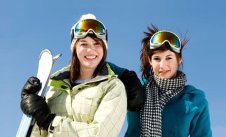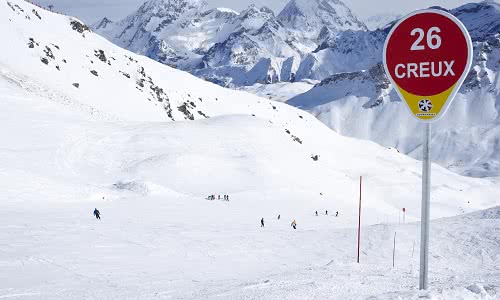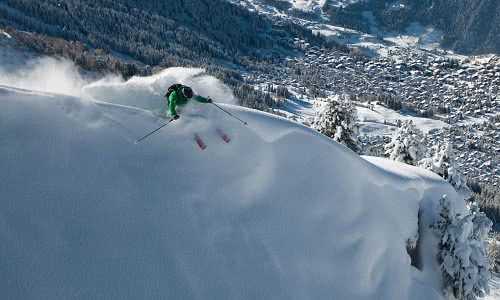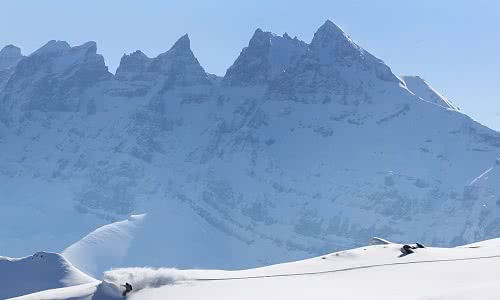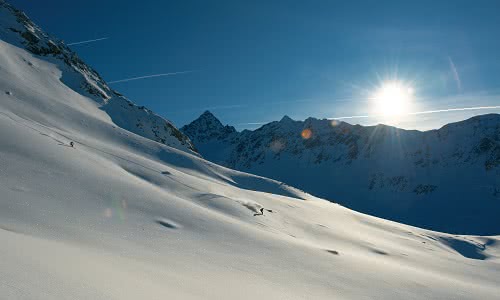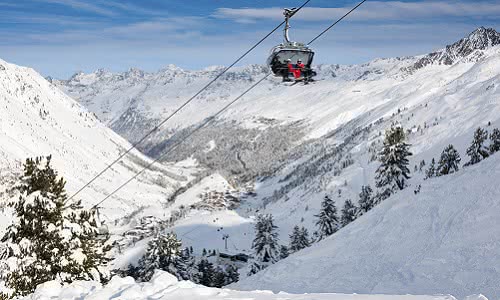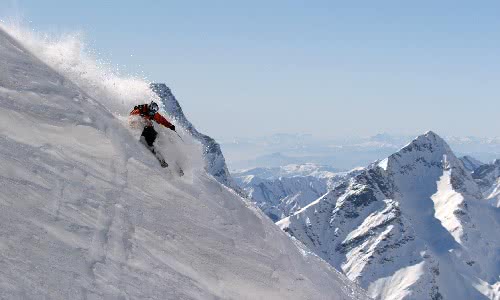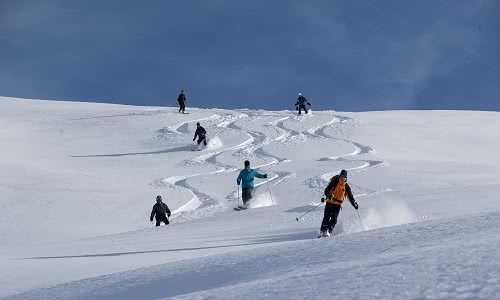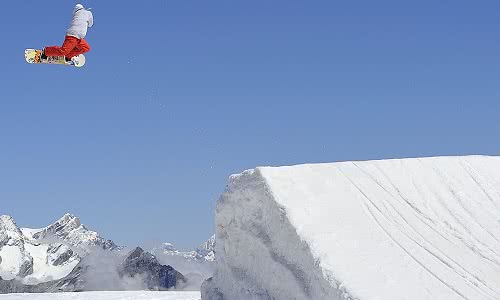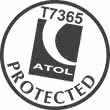Expert Ski Holidays
Advice for advanced skiers & snowboarders from SNO
Expert skiers and snowboarders are the masters of the mountains – you have hundreds of snow miles under your belt and the skills to navigate all types of terrain.
Keeping on top of technique, mindful of Mother Nature and hungry for new adventures, you can explore and enjoy every ski area and its backcountry to the max.
with your own travel concierge. Send an enquiry or give us a call, and we'll
help you plan the perfect Expert ski holiday
020 7770 6888 ← online or call ↴
020 7770 6888
What is advanced skiing?
Early Advanced skiing: proficient skiers with good carving and speed control on all pistes including black runs. They have experience on different types of terrain and have done some off piste and moguls. They’re often keen to perfect high-speed carving, pole planting and short turns.
Advanced skiing: accomplished skiers are capable carving and making short turns on black pistes. They like fast runs, steeps and can ski moguls and off piste. They want to develop technique on bumps and powder and boost mileage and confidence.
Expert skiing: expert skiers are able to handle all types of terrain and conditions. They make neat, controlled turns and can capably switch between carving and skidding depending on conditions. Most skiers at this level spend a lot of time on bumps and powder and are keen to maintain good technique and push boundaries. Some might consider racing.
What is advanced snowboarding?
Early Advanced snowboarding level: skilful snowboarders who have mastered carving and established a good riding rhythm on red runs and easy black runs - making sharp turns and riding switch at speed. They have experience of easier powder and tree runs and are usually working on linking turns on unpisted slopes and building up park skills on larger obstacles.
Advanced snowboarding level: advanced riders can descend red runs with ease as well as most black graded terrain. They are switching smoothly and capably carving. They are familiar with powder terrain and off piste equipment. They are using the bigger obstacles in the park and working on 360s.
Expert snowboarding level: the greatest boarders are confident carvers, able to ride every kind of slope including steeps, bumps, ice, glades and deep powder. They can pull off big moves on the expert/black obstacles in the park. They’re keen to keep technique polished and explore every inch of the mountain with a focus on backcountry.
Advanced ski courses & performance clinics
Even the best athletes in the world need coaching, and hiring an instructor or guide every now and again is the best way to keep on top of your game.
There are all kinds of options available, from advanced ski courses where you can hone technique in a group or private lesson, to performance courses which focus on a specific skill (bumps, steeps, powder, freestyle…). Another option is hiring a mountain guide, who’s main purpose is to show you the best routes in the area, and will give you tips on technique in the process.
Expert ski areas
Many ski areas just have one or two black runs – pick one with several and you’ve a lot more opportunity to hone your technique. There are 64 in Italy’s Dolomiti Superski, while in France you’ll find 37 in the Paradiski, 32 in the 3 Valleys, 28 in the Portes du Soleil and 24 in Espace Killy. Any resorts in these areas aren’t going to leave experts wanting.
Off-piste is another factor to consider, which the above ski areas have in swathes. Verbier, St Anton and Chamonix are some the world’s best resorts for powder terrain.
Advanced ski tips
- Don’t lean back, keep your weight forward so you balance over the middle of your skis and keep your arms in front of you.
- Keep your upper body facing downhill on steep runs, just use your legs to turn
- Take avalanche warnings seriously.
- Stay humble – being an advanced skier or snowboarder doesn’t mean you don’t need the odd lesson to ensure you banish bad habits and learn the latest techniques
- Never go off piste alone or without the correct equipment.
- Plan ahead what path you’re going to take before you begin your descent.
- Keep your hands – especially your uphill one – in front of you when skiing.
Advanced ski techniques
How to ski backwards / ski switch
Keep knees a shoulder width apart and hands out in front of you. Alternate twisting your body to look over your right and left shoulder (whichever side is further down the slope) to keep an eye where you’re going. Start off on a wide, gentle run in a kind of backwards pizza/snowplough position, push into the left or right leg to change direction. As confidence builds you can move into a parallel position, scissoring feet slightly to turn.
How to ski moguls
If you’re confident pole planting, making short turns and controlling your speed, you can try mogul skiing. A lot of ski schools offer performance clinics focussed on bumps, or you can hire a private instructor to show you the right techniques. The main rules are to pick out a route along a line of moguls that look consistent in size and distance between them – start off with the smaller bumps. Ski over the moguls not around them. Turn at the top of the mogul, then ski down it and turn again on top of the next mogul. Try and develop a rhythm, using pole planting. Stay in control of speed by holding weight above the centre of your skis or ever so slightly forward. Keep upper body facing down the slope and move your legs with skis close together and knees bent to absorb the bumps. Don’t look down, keep your eyes on the route you have planned!
How to ski steep slopes
Master edge control to keep speed in check, use pole planting placing the pole down the slope to drive you into the next turn. Practice upper body separation with your torso facing downhill and legs driving the turns. Keep weight centred and balanced over your feet – leaning back into your heels makes skiing steeps a lot harder. Hips should be forward and knees loosely flexed.
How to pole plant
Pole planting is when skiers place their inner pole in the snow to help them turn. Plant the pole at a right angle to your boots at the start of the turn to aid balance.
How to do edge checking / edge control
Use the edges of your skis to control your speed by leaning both legs into the slope at the same time, rather than just the downhill leg. Reducing and increasing the angle of your edge will affect your speed – with edges released and skis flat on the snow you will have the least resistance. Make sure your upper body stays facing downhill.
How to do side slipping
Side slipping using edge control is an alternative way to get down a particularly steep or icy bit of piste. Have your skis across the piste rather than facing down. Roll your ankles down the hill to allow a controlled slide, then back upwards to stop.
How to ski short turns
This is an essential technique for narrow runs. Keeping your upper body facing downhill and weight over the centre of your skis, move your legs to make parallel ‘short radius’ turns in quick succession. You can use pole planting to mark each turn.
How to carve on skis
For carving, cut into the snow with the ski edge so you travel along the length of the skis rather than sliding along on the base of the skis. Allow the curved shape of your skis to lead the turn, then switch straight to the edge of your other ski.
How to hop/jump/pedal turn
These are useful on narrow slopes where you don’t have time or space to do a normal turn. Lower your centre of gravity then quickly lift your skis off the snow with a jumping motion, pole plant and turn while both skis are in the air and land on bended knees facing the other direction.
Which are the best ski holidays for experts?
| Accommodation | Resort | Price (per person) from |
|---|---|---|
| Chalet La Rocheure | Val d’Isere, France | |
| La Folie Douce Hotel | Chamonix, France | |
| Haus Hochkar | St Anton, Austria | |
| Hotel Vanessa | Verbier, Switzerland | |
| Bellevarde Lodge Savoie | Val d’Isere, France | £1130 |
| Parkhotel Beausite | Zermatt, Switzerland | |
| Hotel Ducs de Savoie | Courchevel, France | |
| Hotel Seehof | Davos, Switzerland | £1789 |
| Sunshine Mountain Lodge | Banff, Canada | |
| Camp Zero | Champoluc, Italy |





